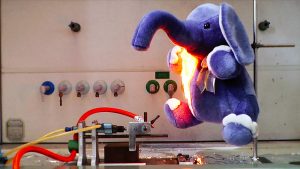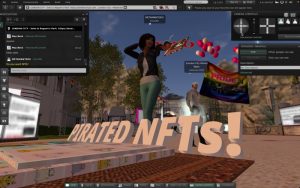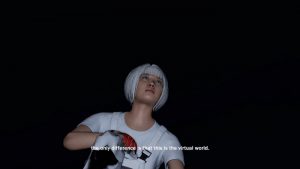Then 19th edition of Art Futura, the Barcelona-based festival of Digital Culture and Creativity, closed on Sunday with the Prize Giving Ceremony. Awards were handed to the creators of best pieces in 3D and digital animation and of the best Spanish videogames. Not one single girl climbed on the podium to receive a prize (that’s ok, ladies, i’m not into 3D either) but most of the awardees thanked either their girlfriend or their mum for their support. There was even one ‘gracias a mi abuela/thanks to my granny’. How sweet!
I’m back in my kitchen, so time has come to write a couple of posts and share with you what were for me the most interesting moments of the festival.
First one is the presentation of a sculpture called Splash.
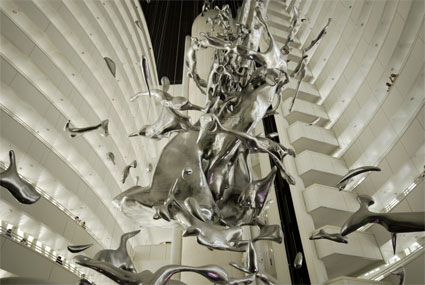 Image by Núria Jordán & Salvador Barceló
Image by Núria Jordán & Salvador Barceló
Mona Kim, Todd Palmer, Olga Subirós and Simon Taylor from Program Collective took the stage to share with us the whole process that lead to the spectacular sculpture they created for the Water for Life exhibition at the Expo Zaragoza 2008, a fair that focused on water and sustainable development.
The challenge was to fill in two entire floors of the Water Tower, the Expo’s signature edifice. Two floors might not seem much until you add to that a huge empty space of 40 m high that the designers had to occupy with a work which could somehow balance the architecture and get people to walk up the ramps that wrap around the tower’s interior.
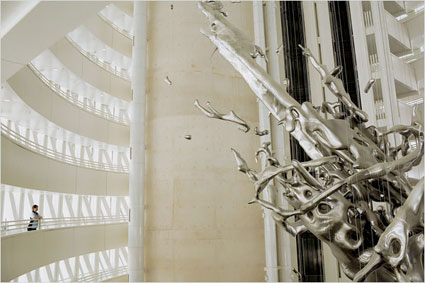 Photo: Matias Costa for The New York Times
Photo: Matias Costa for The New York Times
The result of that brief was a series of installations and a very photogenic hanging sculpture called Splash which freezes in solid form the kinetic properties of water hitting a surface, like the arrival of life on our planet. Video:
As visitors climb to the top of the tower, they can enjoy a panoramic view of the city but also discover all the layers and facets of the sculpture. Besides, Splash’s shiny surface reflects the environment around it, becoming a distorted mirror of the video images playing below, and of the people watching it from the ramps that circle around it. The designers had to break down the sculpture into its most basic elements, ending up with 84 giant pieces that had to be suspended from the tower’s ceiling by a total of 140 cables, some of them as thin as 3 mm.
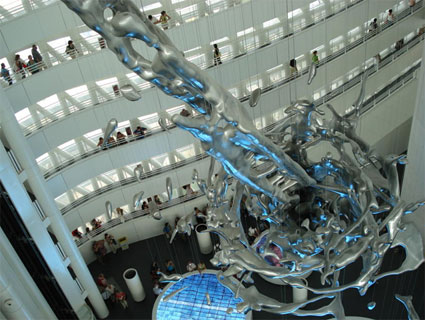 Image by plus arquitectura
Image by plus arquitectura
The forms of this 22.5 meters (74 ft) high installation were generated through digital animation technologies that modeled the deformation and energetic scattering of a drop of water being acted upon by various extreme planetary forces – including gravity, wind and heat. The dynamic simulation systems were carried out by Pere Gifre from IKONIC ARTS.
Image on the homepage by Gallo Quirico.

